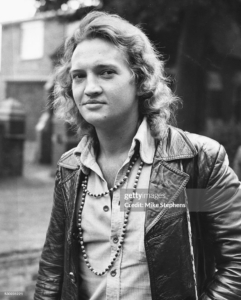
In the Perigord, just as the roses start to fade with autumn, the little purple daisies known as Vendangieres bloom to announce that it is time for the vendange, the picking of the grapes. But it was yet again a grim harvest that they signaled this year. The red wine and especially the Merlot grapes were savaged by attack after attack of mildew this summer as the unusual bursts of heat were followed by great drenches of rain. The Bordeaux Wine Bureau (CIVB) reckoned that ninety percent of the region’s vineyards had been hit. And this was not your usual mildew.
Something most unusual took place this year in the coastal waters around Britain, Ireland and France. The surface temperature of the sea rose in ways nobody had seen before, from three to five degrees above normal. This sent whole types of fish fleeing to the north to escape the heat but there was another result: a very intense evaporation of surface water and the prevailing winds carried the saturated air over the Bordeaux and Bergerac vineyards. The land then rises more than a thousand metres to the Massif Central, the source of the great French rivers from the Loire to the Dordogne, the Lot and the Rhone. That, along with the Nino effect this year and climate change in general, seems to be the explanation for the recurrent attacks of mildew.
Merlot has long been the characteristic grape of Bordeaux and its neighbours, usually blended with Cabernet Sauvignon and Cabernet Franc. In the Bergerac some Malbec is also added, although the traditional local name for the grape is Cot. also known as the black wine of Cahors. It was the wine served at the marriage of Eleanor of Aquitaine nearly nine hundred years ago.
Even before this year’s savage attacks of mildew, Merlot was becoming a troublesome grape, ripening earlier and earlier as the climate warmed. But just because the grapes were ready to be picked, that did not mean that the phenols and tannins were also ripe for making wine. The problem was that as the winegrowers waited the extra two weeks and more for the phenols to be ready, the sugar content of the grapes became ever greater. That meant that wines that
had traditionally contained twelve percent alcohol could now contain 14 percent and more.
This did not simply begin to affect the taste of the wine, it also began to change the rules of the road. French drivers had long assumed that two glasses of wine with dinner would not put them over the alcohol limit if stopped by the police for a breathalyser test. That was true when wine was at 12 percent alcohol. But at 14 percent and more,two glasses meant they could face fines and the suspension of their licence to drive.
Bear in mind that wine consumption per head in France fell from seventy litres per head in 2000 to forty-six litres per head in 2020. Faced this declining market, the problem of extra alcohol in the Merlot was thus becoming a real concern for the wine trade. Winemakers understandably began to look for alternative grapes, particularly since climate change was threatening to make the Merlot problem even more acute. But Merlot, as the most widely grown grape in France, is a tough variety to replace.
Different wine-makers have been experimenting with different replacements, from the Spanish varieties like Tempranillo, or Sangiovese and Primativo from Italy, to more exotic varieties like Saperavi from Georgia in the Caucasus. Others have been exploring wines that have long since fallen out of fashion or in some cases, almost wiped out by the phylloxera disease of the 19th century.
One of the more interesting developments has been a new range of ‘les cepages oublies’ (forgotten varieties) launched by Chateau de la Jaubertie. This is one of the outstanding vineyards of the Bergerac and has a stunning beautiful chateau that used to be a hunting lodge of King Henri IV, until he gave it to his mistress, Gabrielle d’Estrees. It was later turned into an enchanting 18th century chateau by Leon Beylet, the favourite doctor of the ill-fated Queen Marie-Antoinette.
Now run by Hugh Ryman, it produces some of the best wines of the region, particularly its Cuvee Mirabelle white wine, long a favorite of mine, and its Colombier red. They now offer both a red and white version of forgotten varieties and the red is a real success. It contains 40 percent of Merille , forty percent of Fer Servadou and 20 percent Malbec, and is both a bargain and an interesting course in wine history for 9.50 euros.
The Fer (or iron) in the name Fer Servadou testifies to the renowned hardness of the wood in the vine. It is best known for its importance in the Appellation Controlee wines of Gaillac and Marcillac but has been little known in the Bergerac since phylloxera. The Merille is also known as Milgranet around Toulouse, where it has survived. Once a common wine in the Perigord,, Marille is also known by the local name of Perigord Noir, and one or two vineyards, notably the Domaine de Siorac, still use it. The white wine version, being mainly Semillon and Sauvignon blanc with 20 percent Chenin, is less exotic, but very pleasant.
Another strategy being pursued is to assess whether the hardy grapes traditionally grown in mountainous regions like Savoy and around Grenoble, like mondeuses red and jacquere white, will be able to help Bordeaux and the South-west adapt to climate change. In the meantime, bear in mind that although this has not been a good year for Merlot, it may yet help us steer to a brighter future.
